Sake is booming
 Sake is booming; it is growing strongly in popularity both inside Japan and around the world. And while this is true, we still have a long way to go. In an effort to curb I.S.E. (irrational sake exuberance), here are some sobering statistics that will encourage us to drink more sake and to promote it actively.
Sake is booming; it is growing strongly in popularity both inside Japan and around the world. And while this is true, we still have a long way to go. In an effort to curb I.S.E. (irrational sake exuberance), here are some sobering statistics that will encourage us to drink more sake and to promote it actively.
Yes, it is beginning to grow in every metric. Exports grow at an average of over ten percent a year. The domestic premium sake market grows at closer to fifteen percent a year. The domestic non-premium contracts about seven percent a year, but that rate of contraction is decreasing, which is mumbo jumbo for saying that the cheap sake market too looks poised to grow soon. But here are some other statistics.
Sake is only 6.9 percent of all alcohol consumed in Japan.
Sure, this is growing slightly as well. But when a product in a market drops below ten percent it is considered an insignificant part of the market. ‘Course, it depends on how you define the relevant sectors. But the truth is that sake has dropped way down and is only starting to pull out of the quagmire of near-extinction.
 Only 3.2 percent of all sake made is exported
Only 3.2 percent of all sake made is exported
Yep. That is all. The silver lining is that this is up from less than two percent a scant three years ago. But with France and Italy exporting more than thirty percent of their wine, sake has a lot of potential for growth.
Sake is but 0.1 percent of all alcohol consumed in the US
This is not meant to be a US-centric newsletter! But the US imports more sake than any other country (with Korea very close behind), about 35 percent of all exported from Japan. And still, sake is only one tenth of one percent of all alcohol consumed in the US. It is likely this dismally low number is similar in other countries as well.
Sake Brewing is a Tough Business
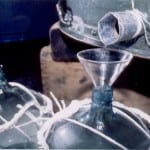 Sixty percent of all sake breweries are small to mid-sized companies, of which half are either losing money or barely (i.e. insignificantly) profitable.
Sixty percent of all sake breweries are small to mid-sized companies, of which half are either losing money or barely (i.e. insignificantly) profitable.
As the boom in sake is poised to help the craft sake industry more than the large-scale end of the industry, this will likely improve too. But for now, the reality is lots of red ink for about half the sake breweries in existence, in particular (but not limited to) the small family enterprises that comprise 60 percent of the industry.
A Quarter Million Tons of Rice
Last year, a quarter of a million tons of rice were used in sake brewing. Of that, about 90 thousand tons, or 36 percent, were proper sake rice (shuzo kouteki-mai).
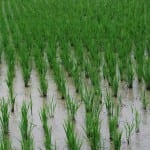 A quarter of a million tons. The fact that only thirty six percent was proper sake rice is not disconcerting at all, since so much non premium sake is made – it is still 65 percent of the market. So the numbers are just about right, even if a bit inconceivably large in scale.
A quarter of a million tons. The fact that only thirty six percent was proper sake rice is not disconcerting at all, since so much non premium sake is made – it is still 65 percent of the market. So the numbers are just about right, even if a bit inconceivably large in scale.
Japan’s agricultural sector, and rice farming in particular, are hardly thriving. Rice is of huge significance to Japan’s agricultural industry, its history and its culture. Sake’s growth really does have the potential to help local communities and the agriculture industry overall. And it all ties in to you and I enjoying it more, where ever we are.
~~~~~~~~~~~~~~~~~~~~~~~~~~~~~~~~~~~~~~~~~~~~~~~~~~~~~~~~~~~~~~~~~~
Interested in sake? Check out my most recent book, Sake Confidential.
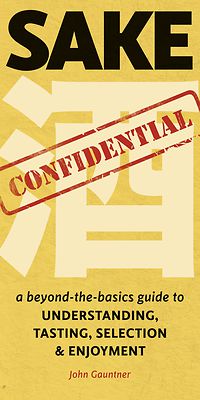





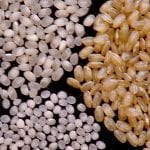 Sake is, as we all know, brewed from rice. Rice, in turn, is a very focused expression of soil, climate, and each year’s weather conditions such as sunshine, rain and typhoons. Every growing season is different, and there are good years for sake rice and bad years for sake rice.
Sake is, as we all know, brewed from rice. Rice, in turn, is a very focused expression of soil, climate, and each year’s weather conditions such as sunshine, rain and typhoons. Every growing season is different, and there are good years for sake rice and bad years for sake rice.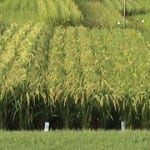 Wouldn’t it be great if someone analyzed it for them? Sure, brewers might know the weather of their immediate vicinity. But since rice can be brought in from other regions, wouldn’t it be great if the brewers could learn what to expect from each season’s rice, each of the main varieties of rice, from each region of Japan? Then they could use such data to determine how to tweak their brewing methods to adapt to each year’s and each region’s rice.
Wouldn’t it be great if someone analyzed it for them? Sure, brewers might know the weather of their immediate vicinity. But since rice can be brought in from other regions, wouldn’t it be great if the brewers could learn what to expect from each season’s rice, each of the main varieties of rice, from each region of Japan? Then they could use such data to determine how to tweak their brewing methods to adapt to each year’s and each region’s rice. Then, it waxes technical. It explains in excruciating detail how higher averages temperatures lead to longer Amylopectin (one of the two components of starch) chains. This means that the starches will dissolve very easily in the moromi (fermenting mash), which means more flavorful sake if controlled, but big-assed sloppy flavors if not reined in. It also accordingly means that resulting sake will be more susceptible to aging the adverse effects of aging.
Then, it waxes technical. It explains in excruciating detail how higher averages temperatures lead to longer Amylopectin (one of the two components of starch) chains. This means that the starches will dissolve very easily in the moromi (fermenting mash), which means more flavorful sake if controlled, but big-assed sloppy flavors if not reined in. It also accordingly means that resulting sake will be more susceptible to aging the adverse effects of aging.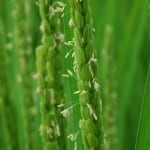 Summer in Japan this year was again hot, just about as hot as last year was. The warmer temperatures of the past decade and then some have continued. Furthermore, the islands of Japan were pummeled with typhoons this fall, meaning lots and lots of rain. Factoring in all that and more, the prognosis was that this year’s rice will be not dissolve very well; not too bad, mind you. Just not so well.
Summer in Japan this year was again hot, just about as hot as last year was. The warmer temperatures of the past decade and then some have continued. Furthermore, the islands of Japan were pummeled with typhoons this fall, meaning lots and lots of rain. Factoring in all that and more, the prognosis was that this year’s rice will be not dissolve very well; not too bad, mind you. Just not so well.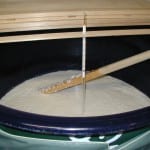 That’s the cool thing about sake: in making it, we can meet nature half-way. What will most noticeably suffer are the highest grades of sake, contest sake especially. But for most of us, what we will be drinking will be as good as it usually is; but we should not forget that added burden that will be on rice farmers and brewers to make it that way. Sake, like wine, remains an integral expression of nature.
That’s the cool thing about sake: in making it, we can meet nature half-way. What will most noticeably suffer are the highest grades of sake, contest sake especially. But for most of us, what we will be drinking will be as good as it usually is; but we should not forget that added burden that will be on rice farmers and brewers to make it that way. Sake, like wine, remains an integral expression of nature.